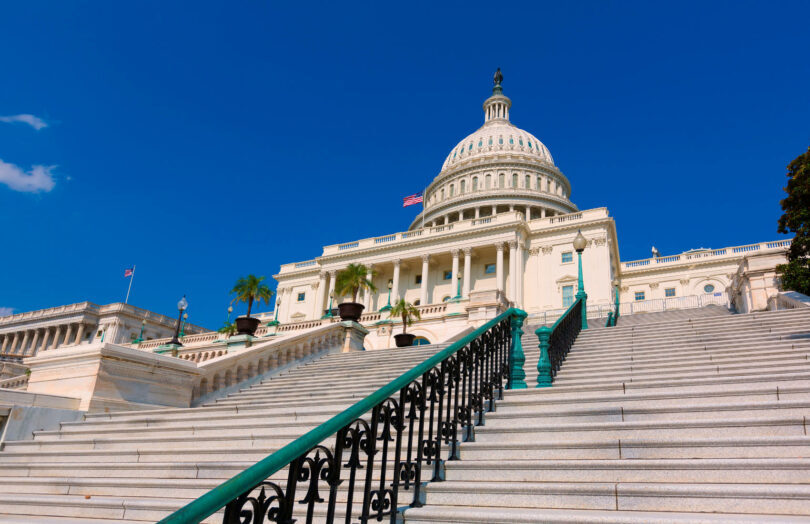Yesterday, House Financial Services Committee Chair French Hill introduced the Digital Asset Market Clarity (CLARITY) Act, a bipartisan bill aimed at regulating digital assets. Developed in conjunction with the House Committee on Agriculture, the legislation has garnered support from five Republican co-sponsors and three Democrats.
“I am proud to introduce the bipartisan CLARITY Act with my colleagues. Our bill brings long-overdue clarity to the digital asset ecosystem, prioritizes consumer protection and American innovation, and builds off our work in the 118th Congress,” said Chairman Hill. The reference to the previous Congress was a nod to the FIT 21 bill for digital assets passed by the full House, but not by the Senate.
As expected, the bulk of the supervision responsibilities will rest with the Commodity Futures Trading Commission (CFTC), with important parts of the rulemaking to be implemented jointly with the Securities Exchange Commission (SEC). Historically, the CFTC has been more involved with derivatives and has had enforcement authority over commodities. Neither of these responsibilities are particularly consumer focused. Hence, this is a significant expansion of duties, especially given crypto’s large retail investment base.
It is perhaps a coincidence or unfortunate timing that all four current CFTC commissioners are planning to step down. Acting Chair Pham will delay her departure until the confirmation of Brian Quintenz, President Trump’s pick for CFTC Chair.
CLARITY covers blockchain-linked digital assets
Having read an important chunk of the legislation rather quickly, we noticed a major gap in its coverage – non-native tokens. Core to the legislation is the definition of a digital commodity, which is defined as a token that is closely tied to a blockchain network. Hence, we assume a utility token that is not closely tied to a blockchain network, such as a digital asset linked to a trading or lending protocol (eg. AAVE), could be considered a security.
Given the lighter regulation of digital commodities, this framing encourages operators of utility protocols to launch their own blockchains. The proliferation of blockchains could lead to greater fragmentation and also introduces complexity and security risks.
We also wondered whether a utility protocol that has issued a token might launch a blockchain solely to justify its classification as a digital commodity, without caring whether the blockchain gains traction. This could result in even more zombie blockchains. We didn’t have time to check whether there are safeguards against this sort of gaming the rules, but in the coming months there could be many new token issuance providers that also offer blockchain launching services.
Separately, it’s worth noting that two high-profile utility token issuers, Uniswap and Ondo Finance, have recently launched their own blockchains – though these appear to be legitimate business expansions rather than regulatory maneuvering.
Apart from requiring linkage to a blockchain, the definition of a digital commodity contains a lot of exclusions. So it does not apply to:
- securities
- securities derivatives
- stablecoins
- bank deposits
- commodities
- commodities derivatives
- pooled investments
- collectibles, goods or other non-commodities.
Investment contracts: the dreaded Howey test
In the past few years many non-lawyers in the crypto space have become familiar with the notorious “Howey test” which is used to establish whether transactions involving the raising of funds involve an “investment contract”. The legislation attempts to provide clarity in this respect. It distinguishes between whether the digital asset itself is an investment contract versus certain transactions.
The bill will update the definition of an “investment contract” in the Securities Act and other legislation to exclude an “investment contract asset”, which is a digital commodity sold pursuant to an investment contract.
However, some transactions could still be covered by securities laws. So there are additional exemptions. One relates to the primary sales (issuance) of digital commodities which relates to a “mature” blockchain system – where means four years have passed since the first sale of the digital commodity. Additionally, the total issuance in the previous 12 months should be $75 million or less and no single coin holder should own more than 10% of the token. There are a number of other caveats, with the most important being that this exemption only applies to issuers that are US based.
All secondary market sales of digital commodities are classified as not involving investment contracts.
Other important parts of the legislation cover the registration of digital commodity brokers, dealers and exchanges with the CFTC. There’s also a section that ensures investors have the right to choose to self custody of their assets.
By potentially classifying non-native tokens as securities, the CLARITY Act may inadvertently encourage blockchain proliferation as projects seek the lighter regulatory treatment afforded to digital commodities.
Caveat: This article is based on a rapid assessment of the CLARITY Act bill and the author is not a lawyer.

🙏 Donations Accepted 🙏
If you find value in my content, consider showing your support via:
💳 PayPal:
1) Simply scan the QR code below 📲
2) https://www.paypal.me/thedinarian
🔗 Crypto – Support via Coinbase Wallet to: [email protected]
Or Buy me a coffee: https://buymeacoffee.com/thedinarian
Your generosity keeps this mission alive, for all! Namasté 🙏 The Dinarian




























